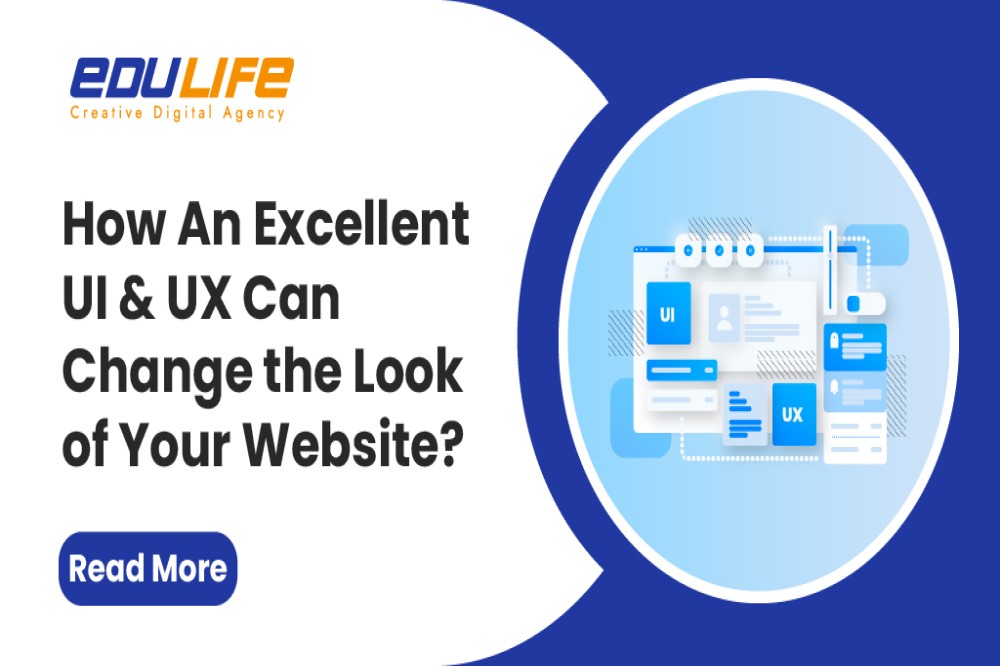
Have you ever come across a website that seems difficult or confusing to use? Your stay was probably very short because how we view and engage with websites is heavily influenced by User Experience (UX) and User Interface (UI).
Let’s explore how applying strong UI and UX design can turn your website into a visually pleasing and easy-to-use portal.
The User Interface (UI) controls how a website looks and feels. It includes design components like
These components complement the UX by making interactions simple and enjoyable and a well-designed UI makes sure they are both aesthetically pleasing and easily accessible.
On the other hand, UX includes how users engage with and understand a website or digital platform. It covers every aspect of the visual design, layout, usability and functionality of the website to provide an intuitive and fulfilling experience. It focuses on understanding the needs, preferences and behaviors of the users taking into account factors like:
By giving equal importance to UI and UX in businesses, we can create a more welcoming environment that not only attracts customers but also encourages them to explore further.
Your website is dependent on UI and UX design because they directly affect consumer perceptions, interactions and commitment to your brand in the online arena today. It aims at providing users with an easy-to-use interface while ensuring that they have good experiences when visiting various sites on the World Wide Web.
UI refers to the interactive and visual elements of your site, for example; design, color palette, typography and buttons which make it appealing as well as user-friendly. Also, keeping eyes focused on a well-laid-out page is a way in which a nicely designed user interface UI.
A well-designed user experience (UX) can improve engagement and conversions through easy navigation, task completion and enjoying customer experience as a whole.
It is possible to increase client happiness, build trust, and set your website apart from competitors by combining UI and UX to produce a smooth and pleasurable user experience. Setting them as your top priorities can improve your website's usability, accessibility and visual appeal and eventually your business's performance.
Creating an experience is the goal of good UI & UX design not just making something pretty. The Key parts include:
A full understanding of the user is the foundation of UI &UX design. The process of designing with the user at the center is known as user-centered design or UCD. To understand user needs, behaviors or pain points, research and empathy are required. This strategy guarantees that the finished product is customized for the intended market, increasing user engagement and satisfaction.
In design simplicity refers to eliminating unimportant details and focusing on the important things. To design a simple and easy-to-use interface this principle is essential. Users can accomplish their tasks without needless distractions or confusion
Creating an engaging user experience requires providing feedback. Users must know that their actions are being recognized. This can be done through visual signals like animations, loading symbols and confirmation alerts. Another aspect of responsiveness is ensuring that a product works well on different screens and devices providing a smooth experience whether it's on a computer, tablet, or phone.
In both UI & UX design, consistency is a fundamental concept. An intuitive and predictable user experience is offered by a consistent interface. This involves using layout, font and colors consistently across various displays and platforms.
Making sure that people with different abilities can use a product is important. This means designing interfaces that include everyone, even those with disabilities and giving them the same access.
Understanding UI and UX can significantly increase how your website looks and feels. It fosters a powerful collaboration. Here’s how to do it:
The beautiful UI on your website can create a good impression when coupled with a well-thought color scheme appropriate typeface and amazing pictures. In addition, UI design helps keep a consistent look across the entire website,
If a website is visually pleasing but hard to navigate, it'll be of little use. A properly designed UX ensures that your website has simple navigation and logically presented content.
Nowadays most people access the internet through their smartphones or tablets. So, for the design to be mobile-responsive, user interface and user experience are very important.
The speed of a website is an integral part of UX design. A fast-loading site reduces bounce rates among users, as even a second delay can make them lose interest. You get a superlative UX that maximizes your site’s usability.
A successful website must have trust as a fundamental element. Consumers are more likely to interact with and make purchases from trustworthy websites.
Together, UI and UX design create a website that meets user expectations and has a credible appearance, which helps establish trust.
Engagement is key to converting visitors into customers. A well-designed UI and UX can significantly increase user engagement.
This blog post will discuss visual appeal as well as the usability of websites in the current world of internet business competition. The quality of your website can be greatly improved by having an effective UI & UX design that can increase its usability, attractiveness and ability to help you achieve your business goals.